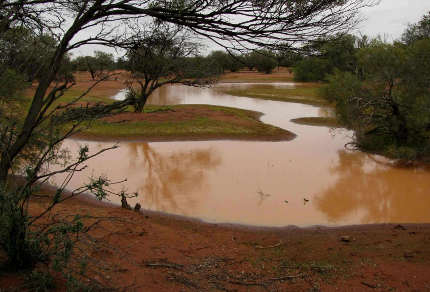Western Australia, Day 6
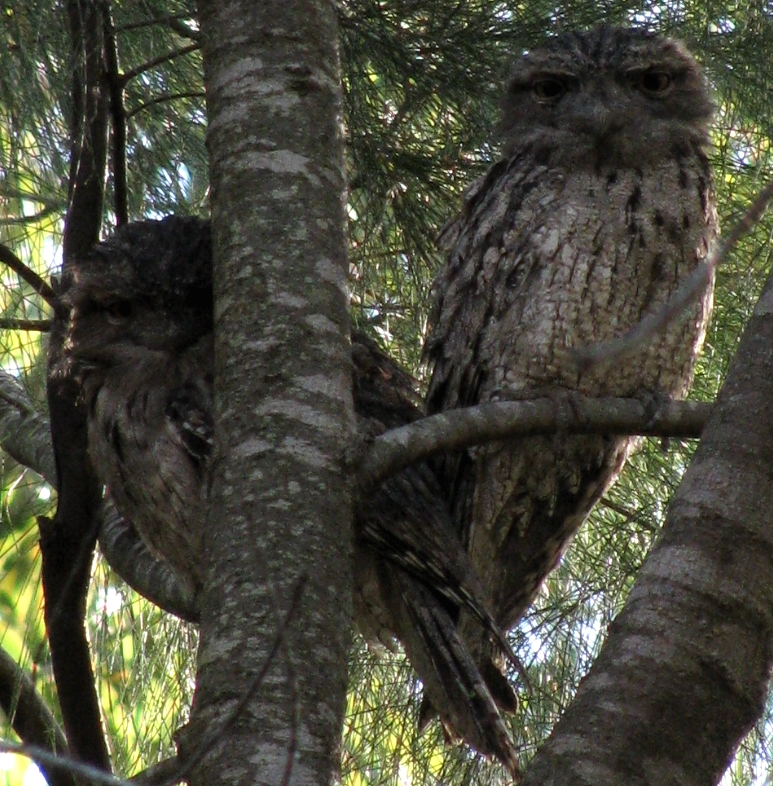
Tawny Frogmouths (© Vilis Nams)
On this, the first day of Australian winter, the overnight low dipped to 10°C in Townsville. Dew lay heavy on the Townsville Golf Club, and cold air chilled my hands as I cycled to Aplin’s Weir and the Ross River Bush Gardens in early morning. Welcome swallows skimmed over the serene river, and a white-faced heron stepped its way carefully across the weir, its grey neck jerking forward with each step. The diverse native trees and shrubs of the gardens hosted green figbirds and peaceful doves, rainbow lorikeets and bee-eaters, and blue-faced, white-gaped, brown, and yellow honeyeaters. A male leaden flycatcher and male rufous whistler fed in a row of gums and paperbarks near the gardens, and a brush cuckoo with pale grey head, warm buff belly, and barred undertail flew from the sandy ground into a tree.
From the dirt path within the gardens, I spotted a pair of tawny frogmouths roosting in a she-oak. Their mottled grey feathers blended in with the tree bark, and their large-headed bodies resembled stubby growths projecting from branches near the tree’s trunk. Silent hunters of the twilight, those tawnies were the first frogmouths I’d ever seen. Chalk up another special sighting from Townsville.
Western Australia: The first day of winter in Western Australia’s desert country brought a low of 6.5°C in Leinster, the mining town close to Yakabindi, and a high of 22°C.1 Vilis told me that generally, mornings were brisk in the WA desert, and afternoons warmed up to about 22-23°C, giving the days a nice, fresh feeling. The air was much drier than in Townsville, and the skin on Vilis’s hands started cracking from dryness after only three days.
In addition to setting out motion-detection cameras, sampling vegetation, and conducting kangaroo surveys and spotlighting surveys, the research crew also conducted bird surveys. Euan and Gus led those, with Vilis and Janis tagging along. Each bird survey was done within the area between a pair of motion-detection cameras, which were positioned about 100 metres apart.
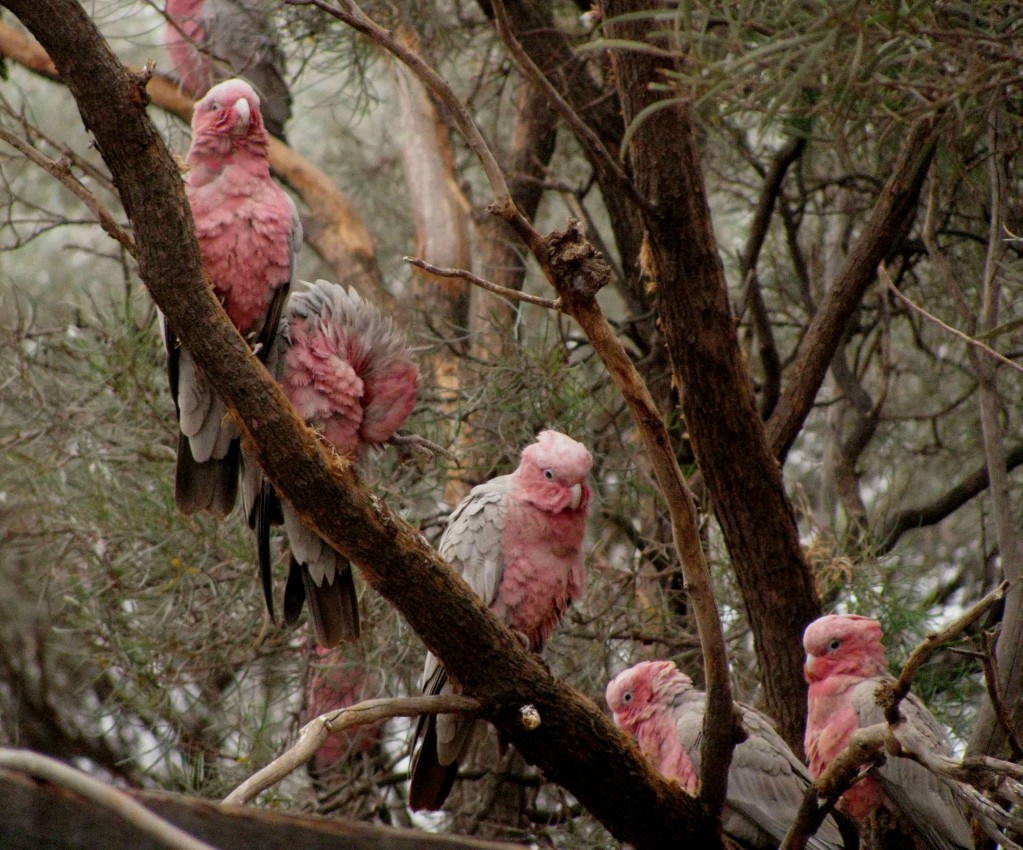
Galahs at Yakabindi (© Vilis Nams)
The crew saw many galahs in and around the station yard at Yakabindi. These were the pink-crested variety restricted to Western Australia, rather than the white-crested variety found everywhere else in the country. Vilis told me that, since the word ‘galah’ in Aussie slang refers to a fool, it’s apparently become politically incorrect to call galahs (from which the term arose) ‘galahs.’ ‘Rose-breasted cockatoos’ is the more politically correct name being advanced, although I doubt the birds really care.
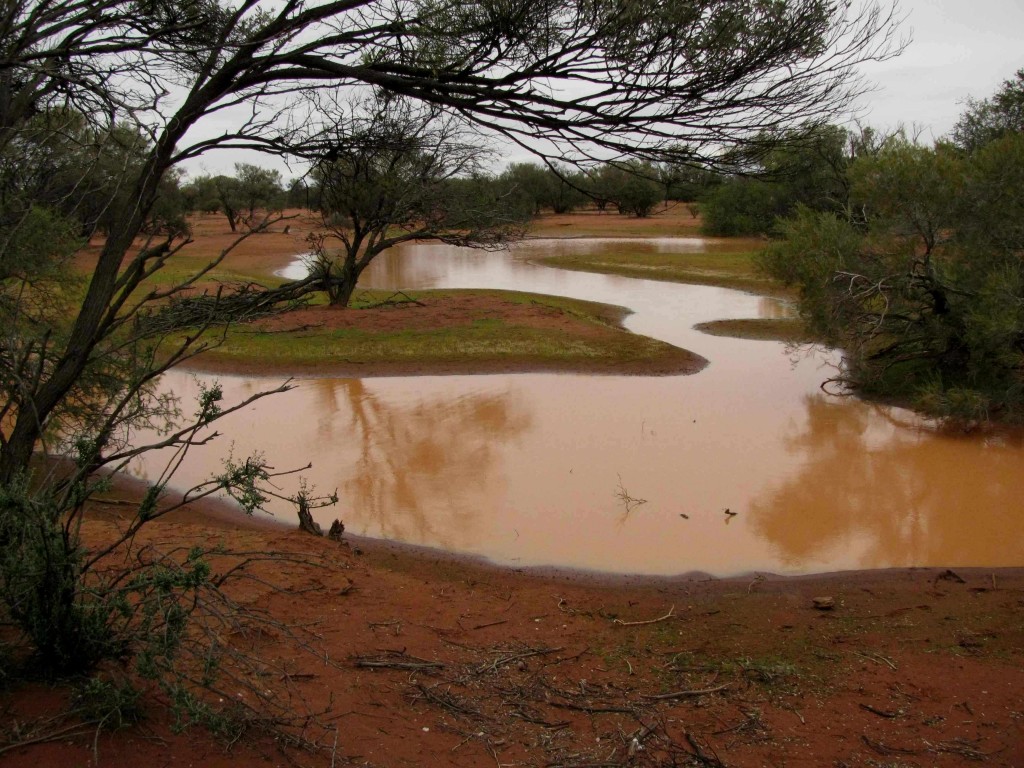
Shallow Rain Pools at Yakabindi (© Vilis Nams)
Rain had fallen off and on at Yakabindi for the past two or three months, resulting in shallow pools and lakes in the desert. The other stations in the area had received much less rain.
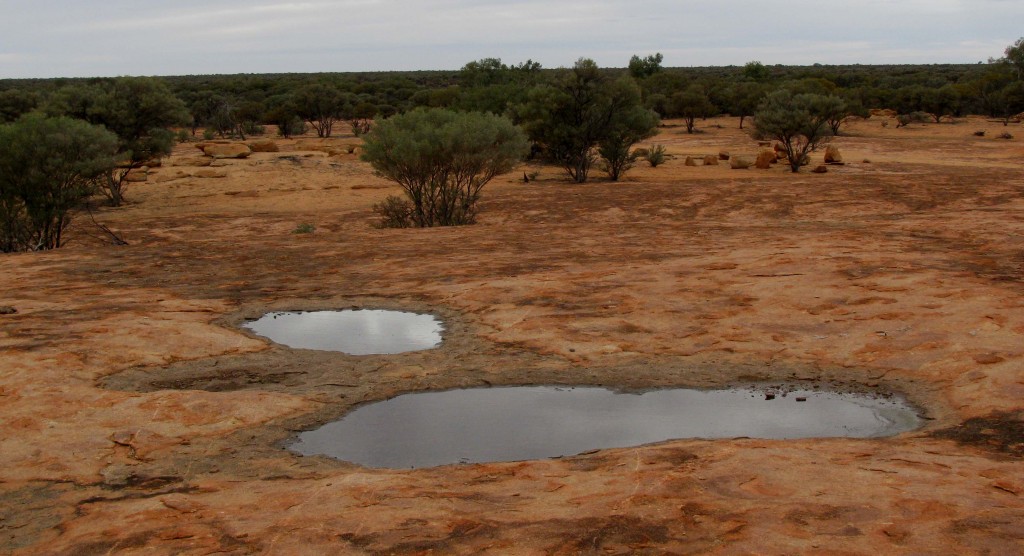
Rain Pools, Yakabindi (© Vilis Nams)
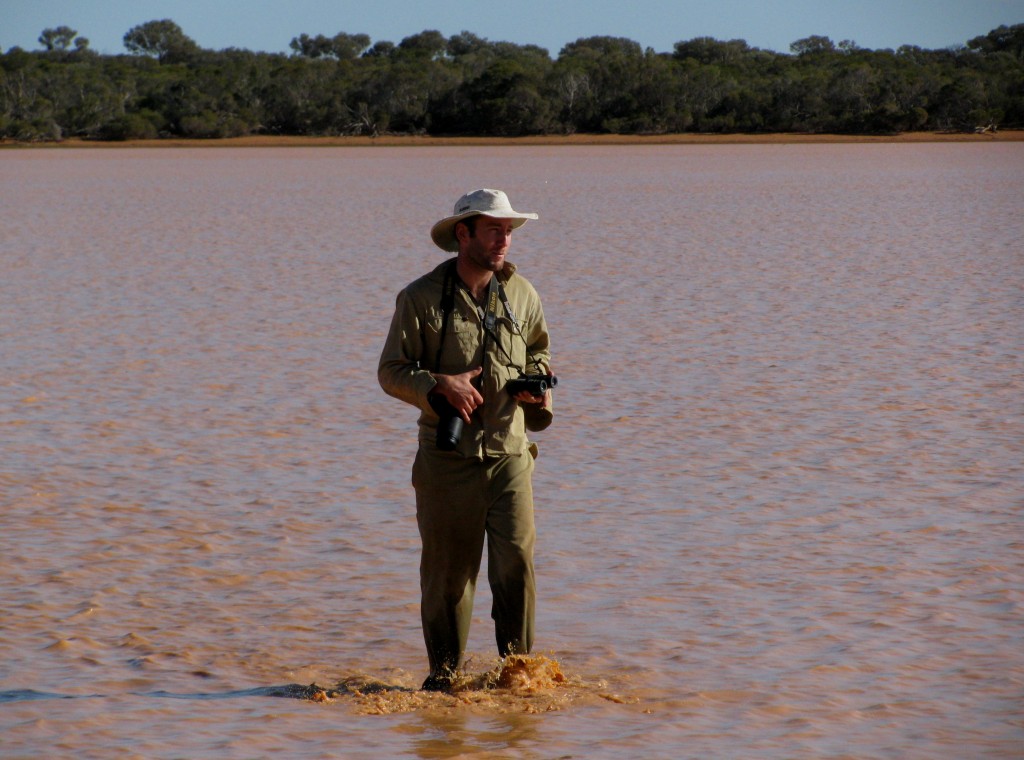
Gus after Crossing a Shallow, Ephemeral Lake on Yakabindi (© Janis Nams)
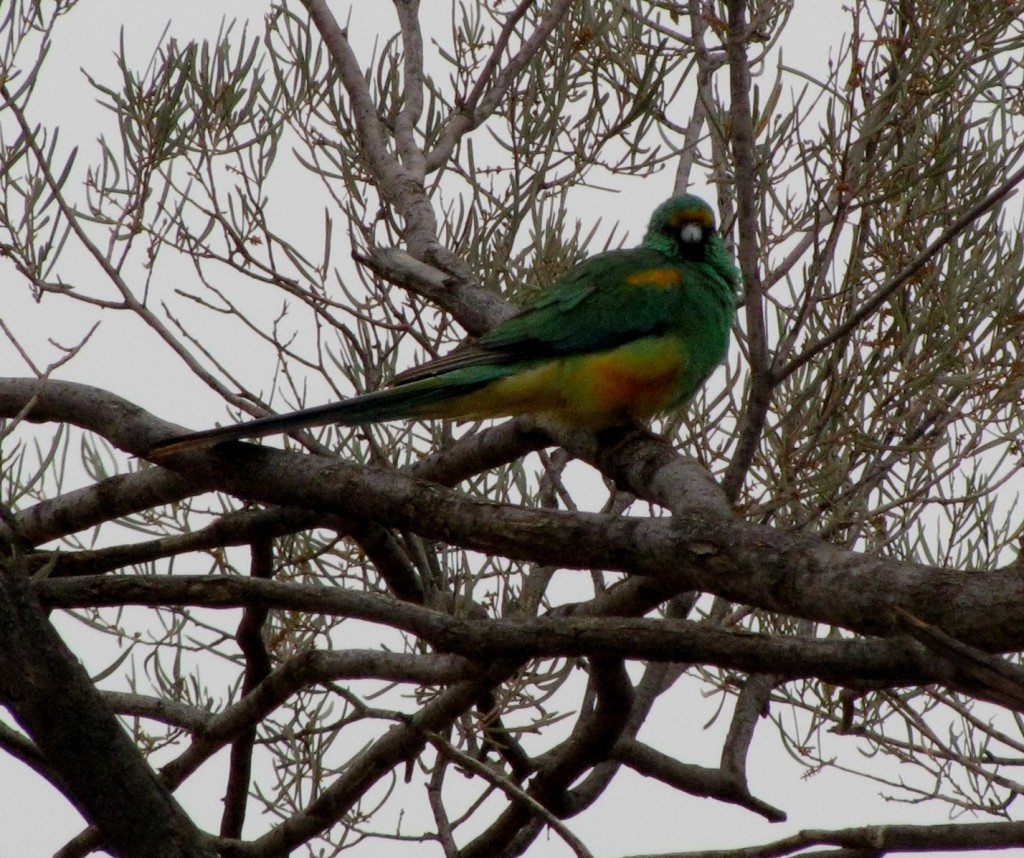
Mulga Parrot (© Vilis Nams)
Today’s bird list: welcome swallows, tree martin, rainbow lorikeets, white-faced heron, green figbirds, peaceful doves, brown honeyeater, blue-faced honeyeater, mynas, magpie-larks, leaden flycatcher, rainbow bee-eaters, nutmeg mannikins, yellow honeyeater, rufous whistler, *brush cuckoo, *tawny frogmouths, Brahminy kite, white-gaped honeyeater, pheasant coucal, red-backed fairy-wren. (* denotes lifelist sighting).
Reference:
1. Australian Government, Bureau of Meteorology. Leinster Aero Evapotranspiration Calculations, June 2010. http:www.bom.gov.au/watl/eto/tables/wa/leinster_aero/leinster_aero.html

